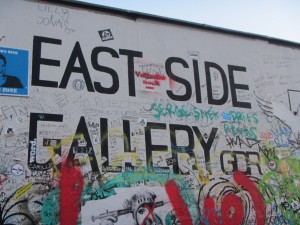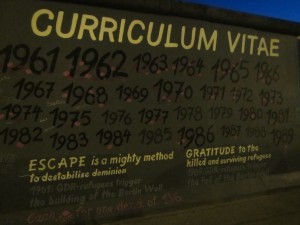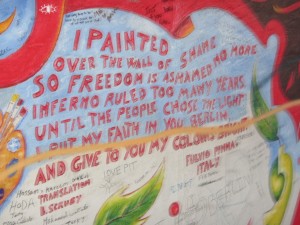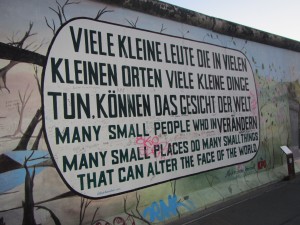I recently read Ryan Knighton’s Cockeyed – a memoir of blindness, for our ASTU class. This text as a life narrative allows audience to peer into the life of Knighton who shares his experience with us of him going blind. In our discussion of disability memoirs (such as Knighton’s), G.T. Couser enlightens how we can see this genre of literature compares to those of other marginalized communities (African American, aboriginal, women, LGBT etc.) (Couser 31-48) . Moreover, how life narratives of marginalized groups have the potential to contest the social attitude but in most cases further reinforces the stigmatization.
Couser’s ideas became apparent when I was flipping through TV channels to find something to watch earlier today. As usual, I scrolled through the TV guide while listening to the elevator music to see if anything interested me. Of course when “The Learning Channel” (TLC) title came up, I am curious to see what crazy show is on the air. Some series include “Here Comes Honey Boo Boo”, “Breaking Amish” an “My Five Wives” (shows that I do not personally watch but their titles are intriguing enough). I recall when I was younger that I would watch certain documentaries on TLC such as “Half Man Half Tree” or “Abby and Brittany” (the conjoined twins), stories of unique people with very special lives. Yet today, their featured shows and target audience have drastically changed throughout the years. Now, the channel features predominantly ‘unique lives’ where the abnormal or atypical person(s) is under the limelight.
I compare the shows featured on TLC to Couser’s notion of how marginalized life narratives can hold the potential to influence social attitude. Couser analyzes a variety of disability life narratives to support his argument. Couser identifies the five rhetorics of disability memoir:
– Triumph – Ideal model or “super crypt” of disability
– Gothic – revulsion, pity, disability needs to be corrected
– Spiritual Compensation – disability is “God Given”
– Nostalgia – focuses on the past, omits disabled body
– Emancipation – critiquing the social construct of disability
Although we may not identify TLC’s series as academic literature, we can see how some series can reflect or compare to some of Couser’s rhetorics. For example of “Triumph”, Little Couple features a dwarf couple who overcome their struggles as dwarfs. Dr. Jen Arnold is a dwarf, but she went through university and became a medical doctor, is married and in the process of adopting their second child. Not all individuals with dwarfism can strive to achieve what this extraordinary couple can (trying to live a normal life and achieve the nuclear family). In other words, by having “the little couple” as the ideal model for dwarfs it may further divide of dwarf community by those who can and can’t strive for success.
An example of “Gothic”, I look to “My 600lb life” in which different individuals who suffer from obesity are featured in a series of one-hour segments. We, the audience, see the hardships of such individuals in hopes of evoking empathy and support. However, this reaction may not always be the case. In fact, comparing Couser’s work of gothic rhetorics with shows like “My 600lb life” we can see parallels in which pity, revulsion and the disability of obesity “needs to be corrected”. Moreover, series such as “My 600lb life” may only further reinforce common attitudes towards obesity as an “individual problem”.
I chose to relate the different TLC series with our work with Couser and Cockeyed because of how they both bring marginalized life narrative discourse into light. Although the intent may differ between the different sites, we may still identify similar elements throughout. Moreover, how the use of publication and media exposes stories of marginalized groups such as Knighton’s creation of Cockeyed for a literary audience, and TLC for public appeal. However we must realize the limitations in which the TLC series may attempt to “normalize” the atypical individual by accessing the public’s everyday life through TV. Yet, it seems as though series like the ones discussed, have and may continue to stigmatize and marginalize these groups of people.












